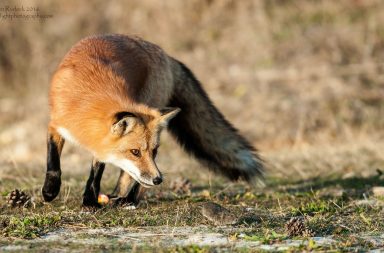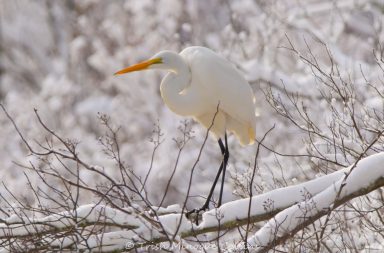MERLIN
John James Audubon and Roger Tory Peterson in their respective early days referred to a Merlin as a “pigeon hawk” (the Latin name means “falcon dove”). Due to their small size, Merlins were a favorite hunting bird of ladies such as Mary, Queen of Scots; medieval nuns loved their birds so much they often took them into church with them! Also, in medieval times it was only the female bird (more popular) that was called a Merlin, the male being called a “jack”.
When looking for these birds they will appear dark all over with the males having slate blue wings and back, a dark head and facial markings that are dull. The breast is rufous striped. The tail is a “distinctive dark tail with two to five highly contrasting light bands”. The females are brown on the back with streaked light brown breast. Young birds look like the female. Females are 20 -30% larger than the males.
Merlins don’t build their own nests, but use old stick nests from crows and ravens. Up to five eggs are laid and incubated by the male and female (with the male doing all the hunting, only incubating while the female eats). Baby birds are born with closed eyes and no feathers (altricial), and are fed by the female with food brought by the male. Once fledged (about 29 days after hatching) the young remain together and may migrate together.
Other birds are the Merlins main prey; being slightly larger than a Robin they will hunt small to medium sized birds. They also take insects, small lizards and small mammals. Merlins hunt either from a perch or in flight (often hovering in the air while they search the ground below) and usually in the morning and afternoon, with only one in five attempts meeting with success. They are powerful and swift, and when hunting are maneuverable flyers. They will fly a few feet from the ground, or rapidly below the treetops, “to gain the element of surprise on potential prey.” “Ringing Flights” is a term used to describe how the Merlin often pursues (in an upward flight) smaller birds that exhibit flocking behavior while being chased (for instance shorebirds & horned larks). They are agile enough to capture Tree Swallows and will capture and devour many insects while moving through the air (including dragonflies).
In North America Merlins are usually solitary in nature and often aggressive toward other raptors; however, in Europe they often roost in winter in communities and often with Hen Harriers. A group of Merlins can be called a “brace”, “leash, or “illusion” of Merlins.
There are three geographic variations of the Merlin: the Prairie Merlin (the largest) found through the central part of the country; the Black Merlin found along the Pacific Northwest, usually not migratory; and the Taiga Merlin (the smallest in size and the one we see on LI) usually nesting in the boreal forests, and found from Alaska to eastern Canada. These Merlin will migrate as far south as Central America although some birds migrate only short distances and winter on the eastern seaboard south of Massachusetts and down into the Gulf States. Surprisingly some individuals have taken up residence in urban areas and it is thought those birds may migrate only to the mid Atlantic.
Thoreau said of the Merlin “…It was not lonely, but made all the earth lonely beneath it.”
As this is fall migration time, keep an eye to the sky, especially on the south shore of the Island; if there is a bird that appears like a dark pigeon in flight, but is very fast and powerful, you may be looking at a Merlin.
Good Birding!

Steven Williams

Diane Prokop Chatterton

Diane Van Dyke Greco
More images on pages 2,3,4 and 5



